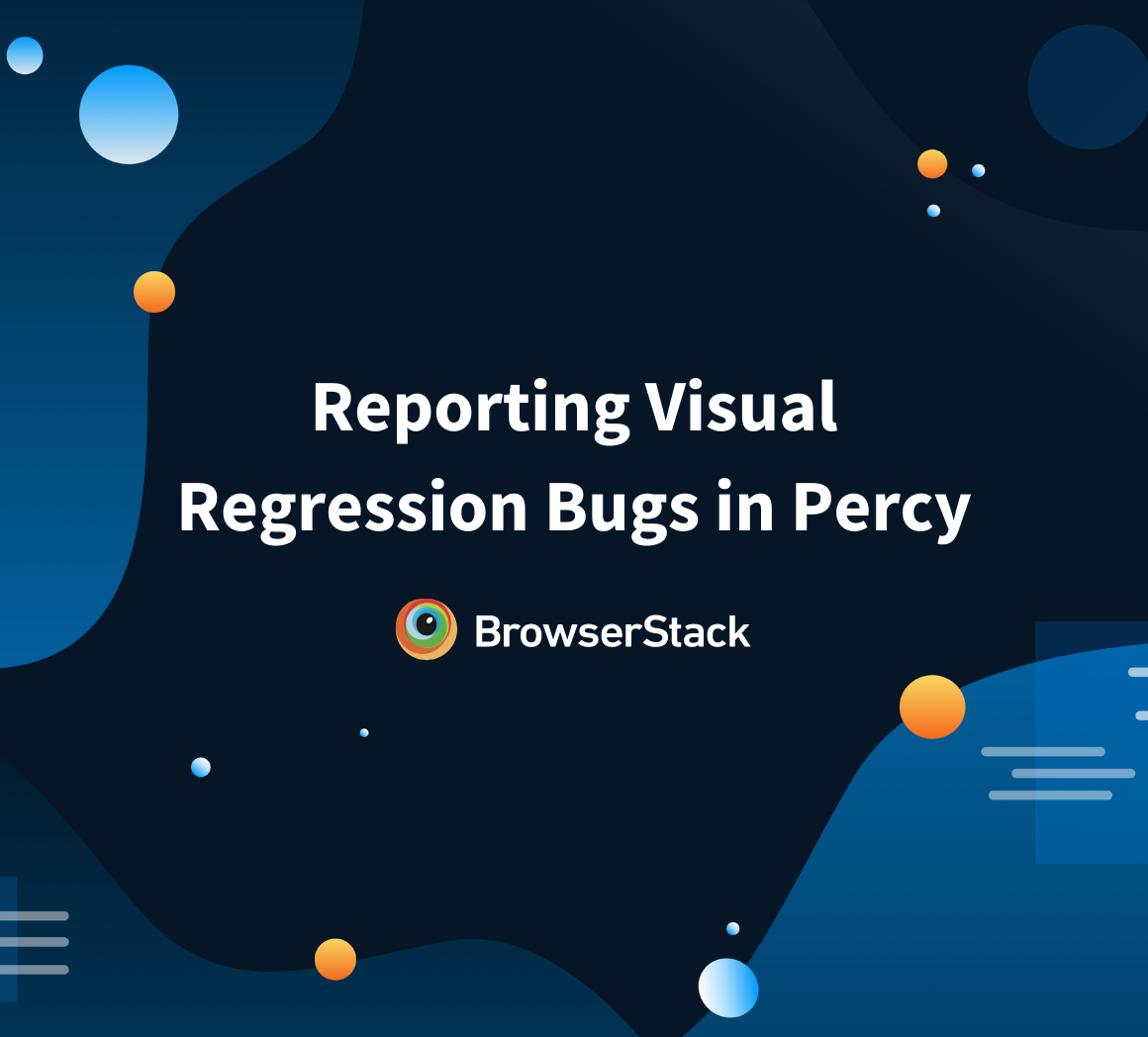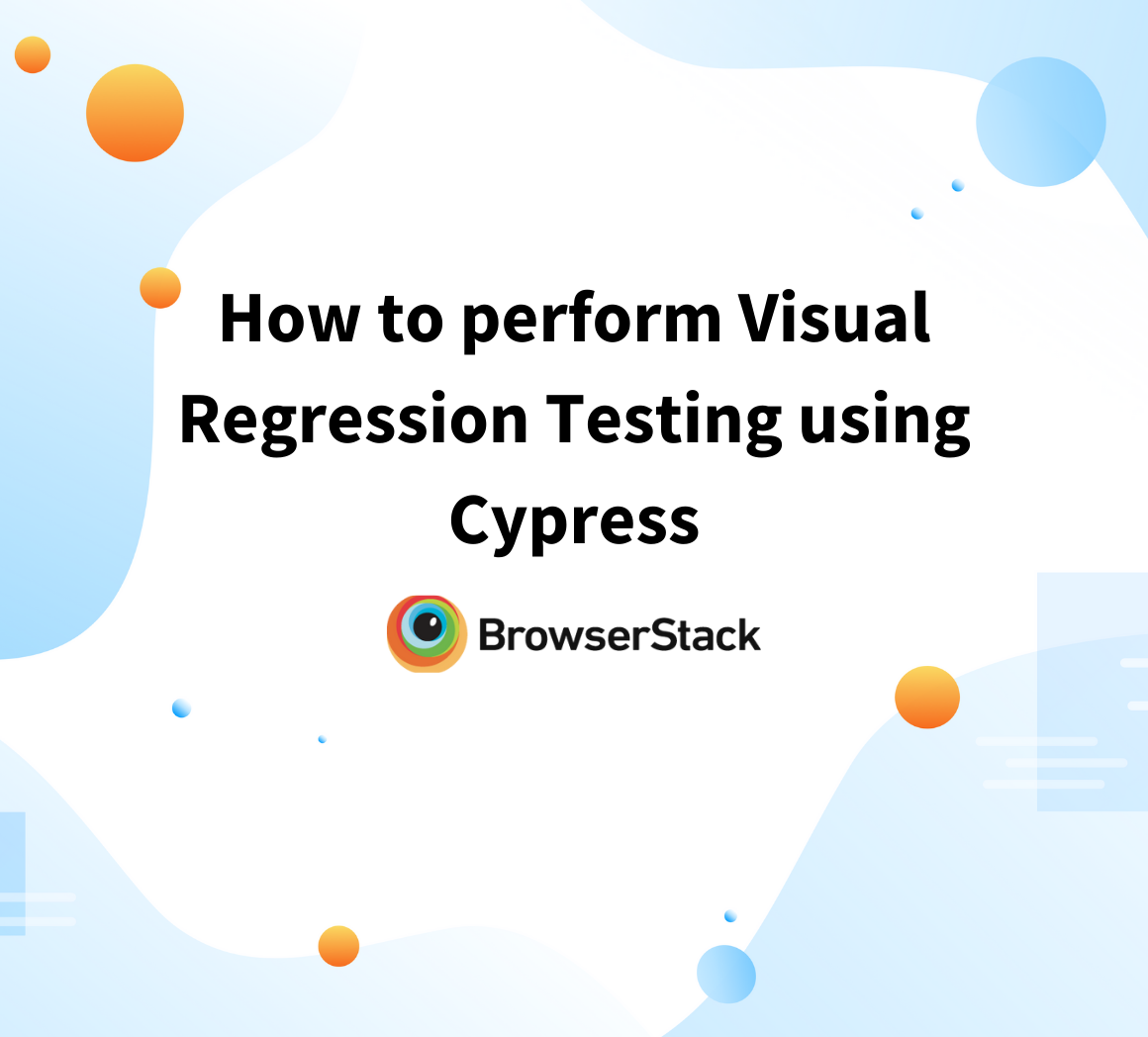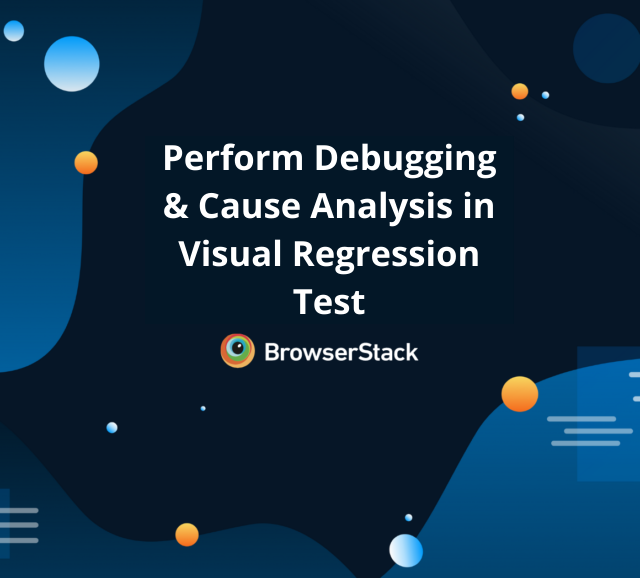Introduction to Visual Regression Testing
By Shreya Bose, Community Contributor - February 2, 2023
Regression Testing is used to verify that any system changes do not interfere with existing features and code structure. There’s a reason regression tests are part of almost every test suite in software development. It is common for devs to change or add a section of code and have it unintentionally disrupts something previously working just fine. In the following sections, we’ll further explore visual regression testing and automated visual testing tools that any team can use.
What is Visual Regression Testing?
Visual Regression Testing applies the same logic but confines testing to the visual aspects of the software. In other words, it checks that code changes do not break any aspect of the software’s visual interface.
A visual regression test checks what the user will see after any code changes have been executed by comparing screenshots taken before and after code changes. This is why visual regression tests are also sometimes called visual snapshot tests.
In the following video tutorial, deep dive and learn how Canva uses visual regression testing to test at scale. Joscha Feth, Tech Lead of the Developer Platform Group at Canva, will also share some tips on avoiding common pitfalls.
Use Case Scenario for Visual Bugs
Let’s say a user opened a web app and tried to click a button but couldn’t because an ad covers 3/4th of the button. The user is naturally irritated and wonders how such an obvious issue with user experience got past the app developers. They might even delete the app because it prevents them from gaining benefits.
This particular issue is an example of a visual bug. Essentially, it is an error that affects the users’ visual experience of using a particular software. Visual bugs are most apparent to users because it is usually the first thing they see when accessing a website or app.
- Visual testing automation is integral to resolving such bugs.
- In the world we live in, hundreds, possibly thousands of device-browser-operating system combinations enact “code-to-pixel” conversations in their own way.
- This is why the same software can look different (or be scrambled) on different devices.
- Differences in screen sizes and resolutions must also be considered, which is why responsive design should be a mandatory part of any development project.
How Visual Regression Testing Works?
Visual tests generate, analyze, and compare browser snapshots to detect if any pixels have changed. These pixel differences are called visual diffs (sometimes called perceptual diffs, pdiffs, CSS diffs, and UI diffs).
For visual testing, one needs –
- A test runner to write and run tests.
- A browser automation framework to replicate user actions
Developers create code replicating user functions (typing text into a field, for example). They place commands at appropriate points in the code to capture a screenshot. The first time the test code is executed, an initial set of screenshots is recorded – to act as a baseline against which all further changes will be compared.
After setting the baseline, the QA runs the test code in the background. Anytime a change is identified, a screenshot is captured. Each screenshot is compared to the baseline image corresponding to that particular section of the code and the software. If differences occur between the images, the test is considered failed.
Once the test code runs entirely, a report is generated automatically. A reviewer then reviews all the images diagnosed as changed from their baseline. Some testing tools generate reports highlighting the differences between baseline and final images, as detected after the test execution.
If bugs cause these image differences, developers can fix them and rerun the test to check if the fixes worked. Suppose subsequent changes in the UI cause discrepancies. In that case, developers will have to review the screenshot and update baseline images against which visual tests can be run in the future.
How to Implement Visual Regression Testing?
Automating visual regression testing and incorporating it into the CI/CD pipeline is best. This saves time, reduces the possibility of human error, and ensures the software’s visual appeal maintenance.
- Create Testing Scenarios. Define what is to be captured in screenshots and at what point in the test they will be captured. Ensure that these scenarios include a variety of user interactions, as that is what software will have to handle in the real world.
- Use an automated visual testing tool to compare recent screenshots (captured after code changes have been implemented to software) with ones captured earlier. The tool will generate a report detailing all differences detected between two sets of screenshots.
- One or more reviewers check and report if changes introduced have led to expected results or if disruptions have occurred.
- If any bugs are detected, fix them (or send them to the relevant devs to be fixed). Once that is done, update the new screenshot as a baseline for future visual regression tests.
Visual Regression Testing Tools
As previously mentioned, visual testing requires a test runner – to write and run tests. Test runners enable testers or developers to create code that reproduces user actions. Each test carries assertions defining a condition that will either pass or fail. Organize tests into blocks and put these blocks into one file that will be used to test a specific module or software function.
Once tests are written, use a tool like Selenium or Cypress to interact with the browser. They support visual tests and allow for the generation of screenshots of web pages.
Finally, one must have a tool for managing the testing process. Percy by BrowserStack is one of the best-known tools for automating visual testing. It captures screenshots, compares them against the baseline images, and highlights visual changes. With increased visual coverage, teams can confidently deploy code changes with every commit.
- With Percy’s visual engine, testers can increase visual coverage across the entire UI and eliminate the risk of visual shipping bugs.
- They can avoid false positives and get quick, deterministic results with reliable regression testing.
- They can release software faster with DOM snapshotting and advanced parallelization capabilities designed to execute complex test suites at scale.
- Percy’s SDKs enable users to install them and add snapshots easily.
- Percy also integrates with CI/CD pipelines and source code management systems to add visual tests to each code commit.
- After tests are initiated, Percy grabs screenshots, identifies visual changes, and informs the testing team of all changes. Then, testers can easily review visual diffs to decide if the changes are legitimate or require fixing.
Visual Regression Testing makes life infinitely easier for developers on any project. It allows them to make sweeping code changes with the assurance that there is a process in place that will capture any resultant bugs.




